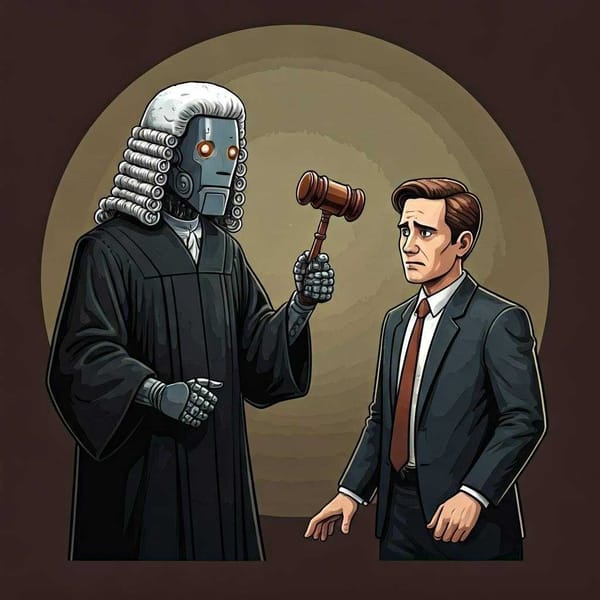Are we free to decide? This is what neuroscience says
This is one of the problems of what is understood, strictly speaking, by free will: the ability to make different decisions under the same environmental, social, individual, and emotional conditions.

Imagine that this weekend you have to choose between going to the theater with a group of friends or going to dinner with a different group. The decision you make will depend on the interest in the play being performed or the quality of the food you are offered, as well as the appreciation you feel for one or the other. Of course, you don't like dramas and you're not a fan of paella either.
In the end, you will leave the choice pending until you know which group the person who is so important to you joins. Is this a free or mediated decision? There seem to be a lot of conditioning factors, for and against, which way to go. In reality, your decision would be completely free if one day you were to choose one activity and another day the opposite.
But when will the same circumstances arise? In practice, never. This is one of the problems of what is understood, strictly speaking, by free will: the ability to make different decisions under the same environmental, social, individual, and emotional conditions.
This problem is compounded by philosophers such as Spinoza and Schopenhauer: a person can do what he wants, but not choose what he wants. Does he know why he likes comedies and not dramas, or omelets and not paellas? Are we predetermined by what we decide?
For these philosophers it seems so, but not for everyone. The battle of determinism also has a religious substratum. For example, the Jesuits defended at the time that free will was necessary to achieve salvation. Jansenists and Protestants believed in predestination, so there was little one could do in that case.
Neuroscience enters the scene
This battle over the freedom to choose has extended to our days and reached the work of neuroscientists. Since Plato and Descartes, it has been assumed that the human being is composed of matter and spirit and that, while the latter deals with the nobler functions such as learning, loving, and deciding, the former deals with more bureaucratic tasks such as eating, walking and chewing stones. Even experts in criminal law find it difficult to apply the concepts of responsibility and culpability to decisions made by a material structure such as our brain.
Today, the vast majority of neuroscientists accept that it is our brain that causes and regulates what we do and what we think. In other words, behaviors, desires, memories, emotions, and thoughts depend on the activity of specific portions of our brain. If seeing requires the retina and defined parts of the most posterior portion of the brain, called the visual or occipital cortex, playing the piano requires the coordinated activity of specific portions of the parietal, prefrontal, and motor cortexes, and so on for all the other activities we do, feel or think.
How does conscious activity occur, i.e., that which allows us to perceive the outside world, acquire knowledge and make decisions? Ultimately, all this underlies the process of deciding, of choosing what one wants to do. First of all, much of the brain activity occurs unconsciously.
Let me give you an example of an experiment conducted by our group. When we watch a Hollywood-style movie, the images follow one after the other in a leisurely fashion with cuts spaced several seconds apart. This way we can follow the scenes and perceive everything that is happening. With typical MTV montages, the time between cuts is very short (no more than two seconds) and, although we think we see everything we are shown, the reality is not like that. It happens that, for visual information to become conscious, brain activity must reach the most rostral portion of the brain, the prefrontal lobe.
When images are replaced quickly the brain activation does not reach the prefrontal lobe and we are not fully aware of what is displayed. Still, we have the subjective feeling that we are seeing the overall content of the film, but it is thanks to a subconscious perception. Such subconscious processing also occurs, in part, when we try to decide what to do: from choosing theater or dinner to studying engineering or economics after the Selectividad.
An elegant demonstration that brain activity precedes conscious mental activity is an experiment in which we study the "aha!" moment, something similar to the moment when Archimedes said "eureka!". We say "aha!" as a synonym for "I found it!" when we have been searching for the solution to a mathematical problem, or to a dilemma of another kind, and suddenly our minds seem to light up and we find the solution.
It happens that, in the case of a linguistic issue, more than a second before we say "aha!" specific portions of the parieto-occipital area and the anterosuperior temporal cortex are activated. Of course, our conscious state varies throughout the day while we are active, resting, thinking about shrews, or sleeping. Each of these situations corresponds to specific brain activity.
Don't say free will, say decision making
Because of the conceptual limitations indicated above regarding free will, neuroscientists prefer to use the more flexible concept of decision making. Regardless of whether they are free or determined, what we are interested in knowing is what happens in the brain when we make a particular decision.
It is not only people who make decisions. Depending on what situation it is in, a cat may prefer to forage for food, look for a mate, or simply doze. The choice of any of these activities is based on internal motives of greater or lesser emotional content (hunger, sex drive, sleep) and is governed primarily, but not exclusively, by the prefrontal lobe, which regulates the activity necessary to satisfy these needs and terminates them when the desired reward is achieved.
But don't worry: we are not machines. We are living beings with inner motives that drive us to explore and understand the world around us and ourselves. Hopefully for the better.
By José María Delgado Garcia, Emeritus Professor of Neuroscience, University Pablo de Olavide, Source: The Conversation




